Lead-based vs Lead-free Solder
One of the primary ways to categorize solder is by whether it contains lead or not. Traditionally, lead was a common component in solder alloys. However, due to health and environmental concerns, lead-free solders have become much more widely used, especially in consumer electronics.
Lead-based Solder
Lead-based solders, also known as tin-lead or Sn-Pb solders, contain a percentage of lead along with tin and potentially other trace elements. The most common lead-based solder is 63/37, which contains 63% tin and 37% lead. Other ratios like 60/40 are also used.
Advantages of lead-based solder include:
- Lower melting point (183°C for 63/37)
- Better wetting and flow characteristics
- Creates shiny, aesthetically pleasing joints
- Low cost and widely available
However, the toxicity of lead and regulations like the European Union’s Restriction of Hazardous Substances (RoHS) directive have led to a shift away from lead-based solders in many industries.
Lead-free Solder
Lead-free solders are alloys that do not contain lead, instead using a combination of tin, silver, copper, and other metals. Common types include:
- SAC305 (96.5% tin, 3% silver, 0.5% copper)
- SN100C (99.25% tin, 0.7% copper, 0.05% nickel)
- SnCuNi (99.2% tin, 0.7% copper, 0.1% nickel)
- SnAg (96.5% tin, 3.5% silver)
Lead-free solders have higher melting points than lead-based solders, typically around 215-250°C. They also require more precise temperature control and may be more prone to defects like Tin Whiskers.
Despite these challenges, lead-free solders are now the standard for most electronics manufacturing due to their reduced environmental impact and compliance with regulations.
Solder Alloy Compositions
Beyond the presence of lead, solder can be further classified based on the specific metals in the alloy and their ratios. Each combination offers unique properties suited for different applications.
Tin-Lead (Sn-Pb) Solder
As mentioned earlier, tin-lead solders are a common lead-based option. The ratio of tin to lead affects the melting point and physical characteristics of the solder.
| Alloy | Tin (Sn) | Lead (Pb) | Melting Point | Applications |
|---|---|---|---|---|
| 63/37 | 63% | 37% | 183°C | General electronics, through-hole |
| 60/40 | 60% | 40% | 188°C | General electronics, older designs |
| 50/50 | 50% | 50% | 216°C | High-temp automotive, industrial |
Tin-Silver-Copper (SAC) Solder
SAC solders are a popular lead-free option, offering a good balance of strength, wetting ability, and melting point. The most common ratios are:
| Alloy | Tin (Sn) | Silver (Ag) | Copper (Cu) | Melting Point |
|---|---|---|---|---|
| SAC305 | 96.5% | 3% | 0.5% | 217-220°C |
| SAC387 | 95.5% | 3.8% | 0.7% | 217-218°C |
| SAC405 | 95.5% | 4% | 0.5% | 217-218°C |
SAC solders are widely used in electronics manufacturing for SMT and wave soldering processes. They provide good mechanical strength and resist thermal fatigue.
Tin-Copper (SnCu) Solder
SnCu solders contain tin with a small percentage of copper, typically 0.7% or 1%. They are cost-effective lead-free options with adequate performance for many applications.
| Alloy | Tin (Sn) | Copper (Cu) | Melting Point |
|---|---|---|---|
| SN100C | 99.3% | 0.7% | 227°C |
| SN99C | 99% | 1% | 227°C |
SnCu solders are often used for wave soldering and in plumbing applications due to their good flow and wetting properties.
Tin-Silver (SnAg) Solder
SnAg solders contain a higher percentage of silver compared to SAC alloys, usually around 3.5%. The increased silver content improves wetting and mechanical strength but also raises the cost.
| Alloy | Tin (Sn) | Silver (Ag) | Melting Point |
|---|---|---|---|
| Sn96.5Ag3.5 | 96.5% | 3.5% | 221°C |
SnAg solders are used in high-reliability applications, such as aerospace and medical devices, where the added strength and performance are worth the increased cost.
Other Specialty Solder Alloys
In addition to the common alloys listed above, there are many specialty solders designed for specific applications or unique properties. Some examples include:
- Indium-based solders for low-temperature and cryogenic applications
- Bismuth-based solders for low melting points and compatibility with heat-sensitive components
- High-lead solders (90-95% Pb) for high-temperature resistance
- Gold-based solders for extremely high reliability and corrosion resistance
The choice of specialty solder depends on the specific requirements and constraints of the application.
Solder Forms and Packaging
Solder is available in various forms and packaging options to suit different Soldering Methods and preferences.
Solder Wire
Solder wire is the most common form for hand soldering. It consists of a thin wire of solder alloy, often with a rosin or no-clean flux core to help clean and prepare the surfaces for bonding. Solder wire comes in different diameters and spool sizes.
Selecting the appropriate wire diameter depends on the size of the components and pads being soldered. Common diameters range from 0.25mm to 1.5mm, with 0.5mm and 0.8mm being popular choices for general PCB Assembly.
Solder Paste
Solder paste is used for surface mount assembly and reflow soldering processes. It is a mixture of powdered solder alloy and flux, with a consistency similar to toothpaste. Solder paste is applied to PCB pads using stencils or automated dispensing systems, then heated in a reflow oven to melt the solder and form connections.
Solder paste is classified by the size of the solder particles, which affects the printing and reflow characteristics. Common particle sizes include:
- Type 3 (25-45 microns)
- Type 4 (20-38 microns)
- Type 5 (15-25 microns)
Smaller particle sizes are used for finer-pitch components and more precise printing.
Solder Bar and Ingot
Solder bar and ingot are bulk forms of solder alloy used for wave soldering and dip soldering processes. They are melted in a solder pot to create a molten solder bath, into which PCBs are dipped or passed through to form solder joints.
Solder bars and ingots come in various alloys and weights, typically ranging from 0.5kg to 10kg. They are an economical option for high-volume soldering operations.
Solder Preforms
Solder preforms are precisely shaped pieces of solder alloy designed for specific applications or component shapes. They can be made in various geometries, such as washers, discs, or custom designs, and are often used for automated assembly or rework processes.
Preforms provide a consistent amount of solder for each joint, reducing variability and defects. They are also useful for soldering hard-to-reach areas or components with large thermal masses.

Flux Types and Roles
Flux is an essential companion to solder, as it helps remove oxides, improve wetting, and promote the formation of strong solder joints. There are several types of flux, each with different properties and cleaning requirements.
Rosin Flux
Rosin flux is a natural, pine-based material that is activated by heat during the soldering process. It is available in three activity levels:
- R (Rosin): Mild activity, minimal residue
- RMA (Rosin Mildly Activated): Moderate activity, some residue
- RA (Rosin Activated): High activity, more residue
Rosin flux is the most common type for electronics soldering, as it provides good wetting and protection without being too corrosive. The residue is typically non-conductive and can be left on the PCB unless aesthetics or specific cleanliness requirements dictate otherwise.
Water-Soluble Flux
Water-soluble flux, also known as organic acid flux, is a more aggressive type designed to remove heavy oxides and contaminants. It is often used in industrial soldering processes for difficult-to-solder metals or heavily oxidized surfaces.
The residue from water-soluble flux is conductive and corrosive, so it must be thoroughly cleaned after soldering using deionized water. This makes it less convenient for manual soldering but well-suited for automated cleaning systems.
No-Clean Flux
No-clean flux is a mild, low-residue formula that eliminates the need for post-soldering cleaning in most cases. It is designed to leave a minimal, non-corrosive residue that does not affect the electrical or mechanical properties of the solder joint.
No-clean flux is popular for PCB assembly and rework, as it saves time and reduces the use of cleaning chemicals. However, some sensitive applications may still require cleaning to meet strict cleanliness standards.
Choosing the Right Solder Type
With so many solder alloys, forms, and flux options available, selecting the best type for a given application can be challenging. Consider the following factors when making your choice:
- Compliance requirements: Ensure the solder meets any applicable regulations, such as RoHS or military specifications.
- Component compatibility: Choose a solder with a melting point and wetting properties suitable for the components being soldered, especially heat-sensitive or hard-to-solder materials.
- Soldering process: Different solder forms and packaging are better suited for certain processes, such as hand soldering, reflow, or wave soldering.
- Reliability and performance: Consider the mechanical, electrical, and thermal requirements of the application, and select a solder alloy that provides the necessary strength, conductivity, and resistance to fatigue or corrosion.
- Cost and availability: Balance the performance benefits of specialty alloys with the cost and sourcing considerations for your project or production scale.
By understanding the properties and trade-offs of each solder type, you can make an informed decision that optimizes the quality, reliability, and efficiency of your soldering process.
FAQ
-
Q: What is the most common lead-free solder alloy?
A: The most common lead-free solder alloy is SAC305, which contains 96.5% tin, 3% silver, and 0.5% copper. It is widely used in electronics manufacturing due to its good balance of strength, wetting ability, and melting point. -
Q: Can lead-based solder still be used for electronics?
A: While lead-based solder is still available and used in some applications, it is restricted or prohibited in many jurisdictions, particularly for consumer electronics. Regulations like the EU’s RoHS directive have driven the adoption of lead-free alternatives in most industries. -
Q: What is the difference between flux-cored and solid solder wire?
A: Flux-cored solder wire has a hollow core filled with flux, which is released as the solder melts. This helps clean and prepare the surfaces for better solder adhesion. Solid solder wire does not contain flux and requires separate flux application. Flux-cored wire is more convenient for manual soldering, while solid wire is often used in automated processes. -
Q: How do I choose the right solder wire diameter?
A: The appropriate solder wire diameter depends on the size of the components and pads being soldered. Smaller diameters (e.g., 0.25-0.5mm) are better for fine-pitch or SMD work, while larger diameters (e.g., 0.8-1.5mm) are suitable for larger components or through-hole soldering. A general-purpose size like 0.7mm is a good starting point for many applications. -
Q: Can I use lead-free solder on old circuit boards designed for lead-based solder?
A: In most cases, lead-free solder can be used on older boards designed for lead-based solder. However, you may need to adjust your soldering technique and temperature settings to account for the higher melting point and different wetting properties of lead-free alloys. It’s also essential to consider the heat sensitivity of the components and any potential compatibility issues.
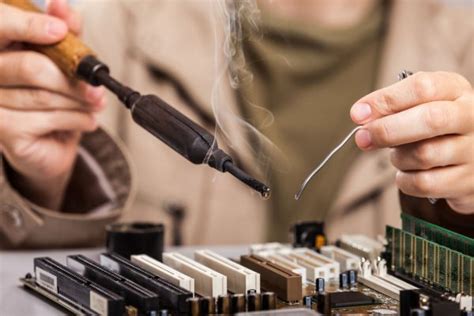
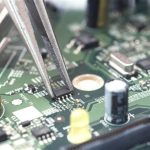
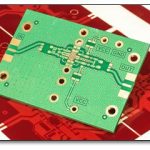
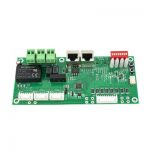
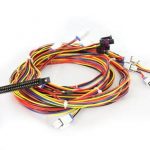
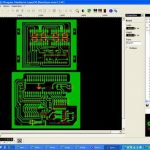
Leave a Reply